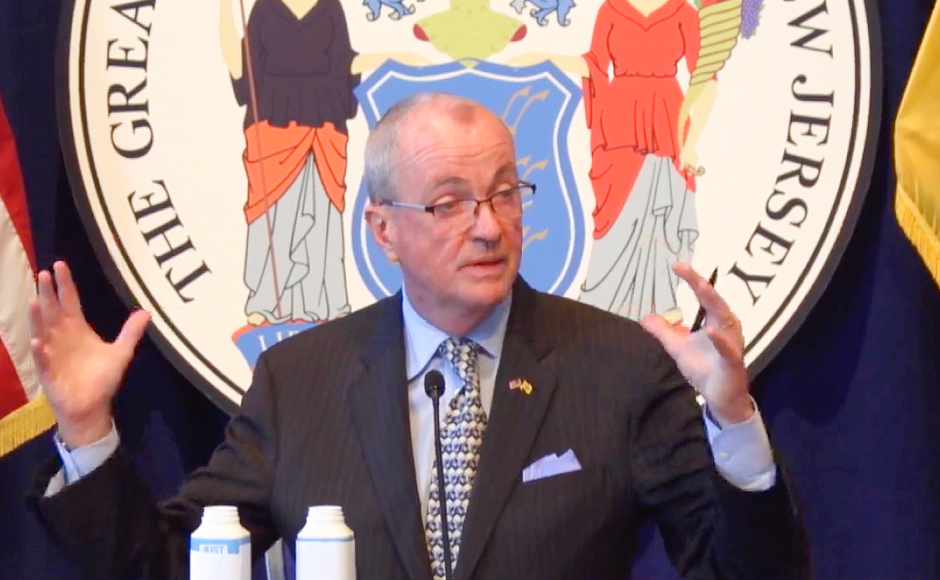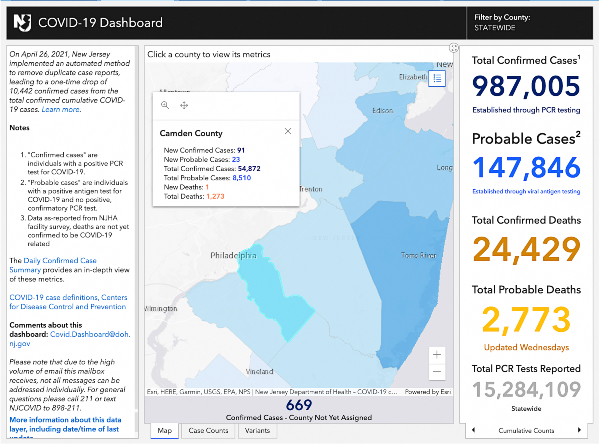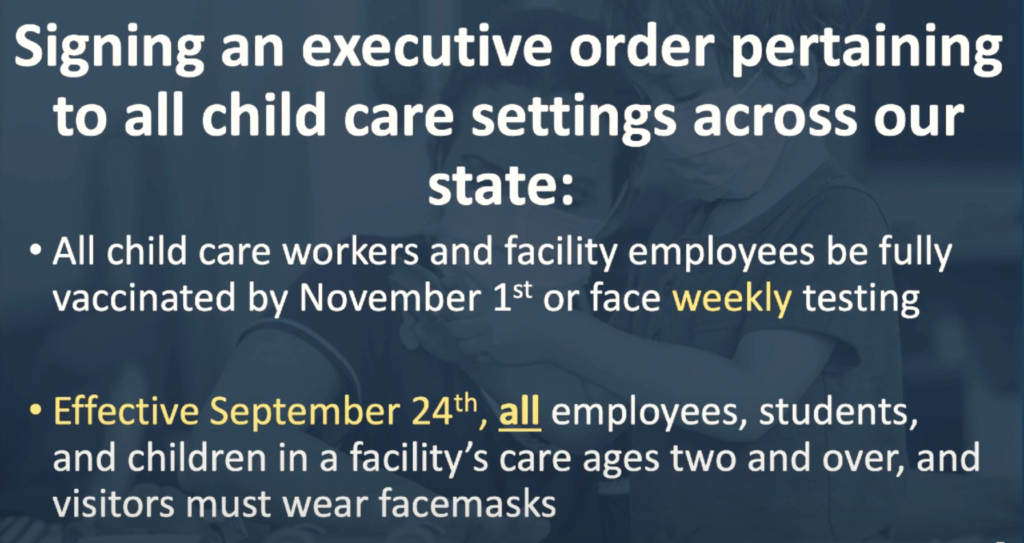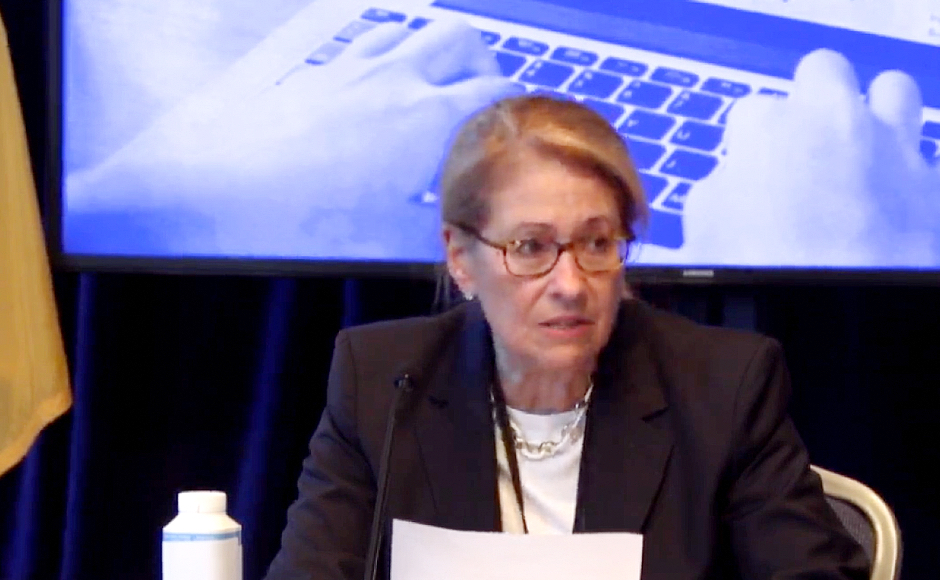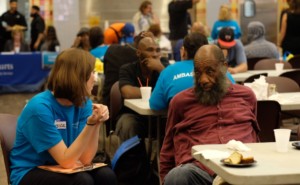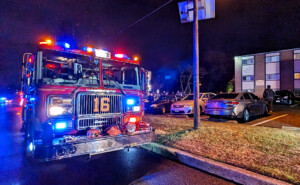Plus: 1.1 million New Jerseyans could be eligible for a COVID-19 vaccine booster, and Camden County officials offer an update on local pandemic conditions, including school-related transmissions.
By Matt Skoufalos | September 20, 2021
Another 1,392 New Jersey residents have tested positive for novel coronavirus (COVID-19), bringing the statewide total to 987,005 cases confirmed via polymerase chain reaction (PCR) testing, Governor Phil Murphy reported Monday.
New Jersey is also reporting 303 new COVID-probable cases based on antigen tests, bringing the statewide total to 147,846 positive antigen tests.
Antigen tests have a faster turnaround time than PCR tests—sometime within 15 to 30 minutes—but are less reliable at detecting active infection of the virus, and more capable of reporting false positives.
Sadly, eight more residents have perished from complications related to the virus, bringing the statewide, confirmed death toll to 24,429 lives lost during the pandemic.
In addition to those lab-confirmed fatalities, the state has acknowledged another 2,773 probable COVID-19-related deaths—seven more than had been previously reported.
Since March 2020, 1,029 of every 100,000 New Jersey residents have been hospitalized with COVID-19, and 278 of every 100,000 have died from COVID-19-related complications.
More than 15.284 million polymerase chain reaction (PCR) tests for COVID-19 have been performed statewide, with a 11.210-percent positivity rate per 100,000 residents.
Rate of transmission (Rt) at 1.07, spot positivity highest in South Jersey
The statewide average of COVID-19 spot positivity testing based on PCR test results stood at 4.97 percent September 16; in South Jersey, it was highest, at 6.60 percent.
Rt, the variable that describes the seven-day, rolling-average, statewide rate of transmission of new COVID-19 cases, hit 1.07 on September 20.
Any Rt figure greater than 1.0 means that each new COVID-19 patient is infecting more than one other person, on average, and the spread of the virus is increasing.
Since its mid-April-2020 COVID-19 spike, the highest reported RT in New Jersey was 1.48, recorded August 1, 2020. Prior to artificially low, adjusted reports of 0.34 in the first week of May, the lowest in the past year was 0.62, recorded June 9, 2020. On May 21, 2021, it reached a new low, of 0.59.
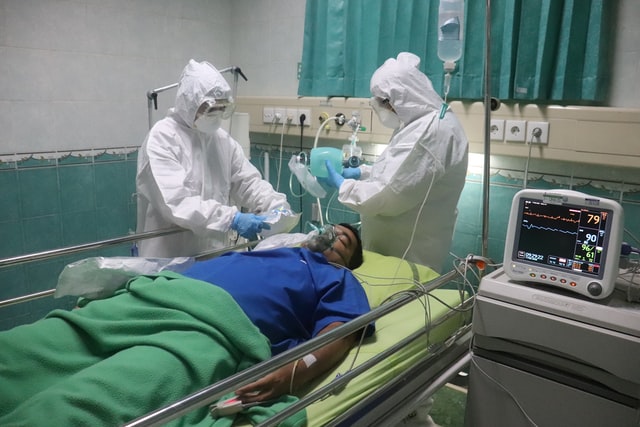
Simulated COVID-19 patient in a hospital bed. Photo by Mufid Majnun on Unsplash
Hospitalizations holding steady, ventilator use approaches pandemic highs
Throughout New Jersey, 1,137 people currently are hospitalized with a suspected (80) or confirmed (1,057) case of COVID-19, Murphy said.
Among those hospitalized patients, 258 are in intensive or critical care, and 146 of the ICU and critical-care patients (57 percent) are on ventilators, and “that’s one of the highest percentages we’ve had,” said New Jersey Health Commissioner Judy Persichilli.
In New Jersey’s 71 critical care hospitals, 125 patients were hospitalized with COVID-19 yesterday, while 108 others were discharged.
LTC update
Across the state, long-term care (LTC) centers have reported 1,699 cumulative outbreaks of COVID-19, and 161 are dealing with an active outbreak. LTCs account for 56,410 infected patients and staff in New Jersey, or 5.7 percent of total cases.
That includes 33,526 residents and 22,884 staffers sickened by the virus, as well as 8,506 lab-confirmed resident and staff deaths (34 percent of the statewide confirmed total), with facilities self-reporting 145 staff deaths.
Of 651 veterans residing in three state-run homes, 456 residents have tested positive for COVID-19, and 156 have died from complications related to the virus. Three hundred veterans have recovered from the virus. Three residents currently are COVID-19-positive.
The facilities at Menlo Park, Paramus, and Vineland are staffed by 1,366 workers, nine of whom are presently COVID-19-positive. The facilities have sustained two staff deaths related to the virus.
At state-run psychiatric facilities, 374 of 1,135 patients and 1,136 staff members have tested positive for COVID-19. Fourteen patients and eight staffers have died from complications related to the virus.
MISC cases, schools
To date, 133 New Jersey children aged 1 to 18 have been diagnosed with pediatric multisystem inflammatory syndrome (MISC). Four of those cases were reported in Camden County, tied with Cumberland and Monmouth Counties for third-least in the state.
All those pediatric patients have tested positive for an active COVID-19 infection or the presence of COVID-19 antibodies, indicating exposure to the virus. No deaths have been associated with this syndrome in New Jersey, although several children have been hospitalized during their treatment for the illness.
Since August 1, 2020, 293 COVID-19 outbreaks encompassing 1,303 individual cases have been traced to schools in all 21 New Jersey counties. In Camden County, 18 outbreaks have been linked to 78 cases, sixth-most in the state.
That includes six more schools that have reported outbreaks—three or more students or staff who contracted the virus within the school—since the start of the year, affecting 20 people, a mix of students and staff.
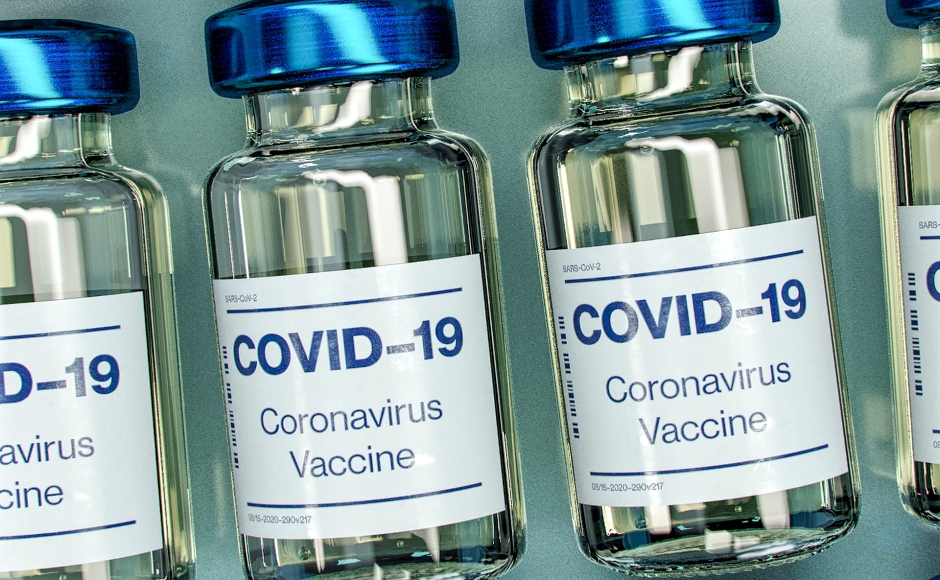
COVID-19 vaccine bottle mock-up. Photo by Daniel Schludi on Unsplash
Vaccination update: NJ approaches 6M fully vaccinated people, exceeds 11M doses administered
Across New Jersey, 11.481 million COVID-19 inoculations have been administered.
Throughout New Jersey, 5.593 million people have been fully vaccinated in-state, having received either a one-shot formulation from Johnson and Johnson or both doses of the two-shot Pfizer or Moderna vaccines.
In Camden County, 608,665 doses have been administered, seventh-most in the state; 300,830 people have been fully vaccinated.
An estimated 424,260 vaccine doses have been administered to New Jersey residents outside of the state, of which 182,630 residents are estimated to have been fully vaccinated.
The first vaccines in the state were administered December 15, 2020; by February 8—55 days later—New Jersey had immunized its millionth resident. Twenty days thereafter, that count hit 2 million, and 3 million within two more weeks.
On March 29, New Jersey crossed the 4-million-dose threshold, and the state cleared 5 million doses over the weekend of April 10, 2021. Eight days after that, New Jersey hit the 6-million-dose mark. By May 3, 2021, the state had cleared 7 million doses administered, and two weeks later, it had surpassed 8 million doses.
As of June 2, 2021, the state had cleared 9 million administered doses and 4 million fully vaccinated New Jerseyans, and on June 18, hit 4.7 million vaccinated individuals, its target goal for 70 percent of the adult population of the state.
By mid-July, that number had increased to 5.019 people fully vaccinated at New Jersey vaccination sites. By the end of August 2021, the state had exceeded 11 million doses administered and was approaching 6 million fully vaccinated residents.
Vax-or-test, masking orders for childcare centers
By September 24, all childcare center facility masking policies “must mirror those in schools,” the governor said Monday, which means mandatory universal masking for childcare center employees, visitors, and children older than two.
Furthermore, all childcare center employees must be vaccinated fully by November 1 or face weekly testing. These directives are identical to those under which all New Jersey schools opened to the public earlier this month.
“We appreciate that it may be difficult to keep very young kids in masks for the majority of the day, but we are looking for these settings to provide kids with as much support as necessary to ensure the safest possible environment,” Murphy said.
CDC receives booster shot guidance, 1.1M in NJ likely eligible
Over the weekend, the U.S. Centers for Disease Control (CDC) Advisory Committee on Immunization Practices (ACIP) issued its updated recommendations on the use of COVID-19 vaccine boosters to the CDC.
According to ACIP, boosters are only recommended for those 65 and older who are at a high risk of contracting COVID-19.
Presently, only those who received a Pfizer vaccine are eligible for a booster, which should be administered six months after the conclusion of the initial vaccine series.
The advisory panel had already recommended that immunocompromised people should get an additional dose of whatever vaccine they received, as should those 65 and older and at high risk of severe illnesses from COVID-19. Those third doses are regarded as the final installment of a three-shot series, and not as boosters.
ACIP stopped short of recommending universal boosters for everyone 16 and older, nor did they recommend mixing vaccine brands in the course of getting a booster.
Persichilli estimated that roughly 1.1 million New Jerseyans could be “immediately eligible” for a Pfizer booster, a figure including 430,000 residents 65 and older who’ve received that vaccine, and a combination of “high-risk individuals” and healthcare workers.
“ACIP will meet September 22 and 23 to offer further recommendations on the usage of Pfizer in this population,” Persichilli said, noting that boosters could be administered throughout “a combination of existing outlets, county sites, and one megasite” in the state.
In a briefing from Camden County government officials on Monday, County Commissioner Jonathan Young said the Blackwood campus of Camden County College—the Gloucester County immunization megasite—would be open “to facilitate and administer boosters” by October 11.
Officials are optimistic that the CDC will authorize emergency use of the Pfizer vaccine for children aged 5 to 11 upon subsequent review.
Breakthrough cases, August 30 to September 6
Across New Jersey, breakthrough cases of COVID-19—infections sustained by fully vaccinated people—continue to be less severe in nature, as hospital ICUs are largely full of unvaccinated people.
Of 12,827 positive cases reported in that week, 2,982 (23 percent) were of fully vaccinated New Jerseyans.
Among the 1,138 people hospitalized in New Jersey with a severe case of COVID-19, just 49 (0.04 percent) were fully vaccinated.
Furthermore, none of the 78 COVID-related deaths New Jersey sustained statewide during that week were of fully vaccinated people.
Camden County update: 1/3 of new cases from kids, 1/4 from those 13 and younger
Camden County hospitalizations continued to trend up in the past week, with “younger and younger residents…[becoming] the primary transmitters of the virus to their unvaccinated peers,” said Camden County Commissioner-Director Lou Cappelli in a written statement.
“We have seen more than 30 percent of our new cases come from school-age children, being under the age of 18,” Cappelli wrote.
One-quarter of all cases in Camden County were reported in children 13 and younger prior to the start of the school year, and officials are “anticipating new cases,” said Camden County Assistant Public Health Coordinator Caryelle Lasher.
Since the 2021-22 school year began, three Camden County school districts have sustained a COVID-19-related outbreak, defined as infections of three or more students, staff, or faculty who are connected only by in-school transmission, Lasher said.
That’s contributed to the 260 COVID-19 cases reported among students, staff, and faculty across Camden County schools so far this year. Those school-originating outbreaks were related to activities involving sports teams, Lasher said, but additional cases detected in schools have originated in households with healthcare workers.
“We have so many areas of exposure that are possible that we’re bringing them into the classrooms,” Lasher said. “It’s really critical that everyone who’s eligible does get vaccinated.”
Dr. Reginald Blaber, Senior Vice President and Chief Clinical Officer of Virtua Health System, said that addressing the welfare of those children will help limit community spread of the virus as the country enters the winter months.
“What we learned from the pandemic of 1918 [is that the] most common mode of transmission in our community is our schools,” Blaber said. “To the degree that we can protect our children, we can protect the community.”
He also noted that the current hospitalization levels in Camden County “are significantly higher than [they were at] this time last year.
“Our fear is that, as the weather gets colder and people are pushed inside, if we’re not wearing masks, and we’re not social-distancing, and especially if we’re not vaccinated, we’ll see a very significant rise,” Blaber said.
He also warned that the influx of COVID patients is tapping hospital resources, making it difficult for patients who need other kinds of care to be seen.
“Our healthcare workers are exhausted,” he said. “We’ve seen a lot of healthcare workers leave healthcare, and those that are left behind are spread thin.”


